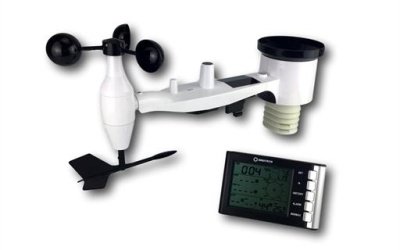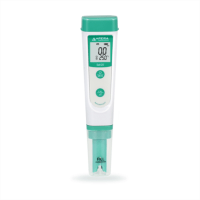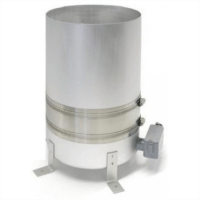Six Essential Ways to Care for and Maintain Your Home Weather Station

Do you already have a home weather station? Are you considering buying a weather station, but you’re unsure of how much maintenance is required? Would you like some maintenance tips that Instrument Choice scientists insist are essential to prolonging the life of your device, that will ensure accurate results?
Look no further!
About weather station maintenance
Weather stations are a fantastic addition to any home, business or farm. Home weather stations are a fun and brilliant tool that empower you to collect hyper-local weather data.
Unfortunately, the Australian outdoor environment is harsh. If you want to prolong the life of your station and be confident of receiving accurate hyperlocal data, it is vital to know how to maintain your device properly. Thankfully, when you know have the right information, this is relatively easy!
How to maintain your weather station
Maintenance steps will vary from station to station, so it's recommended you consult your user manual for specific device instructions. There are, however, six key procedures that are essential for successful home weather station maintenance.
Tip #1: Rain funnel and bucket
Why is Maintenance Required?
This sensor monitors falling rain. Irrespective of whether your device uses a tipping bucket or weighing mechanism, it will funnel precipitation to an area for measurement. While this part of the sensor is open to rain, it is also susceptible to collecting debris such as sticks, leaves, insects, and bird droppings, all of which will affect the accuracy of results.
How to clean
- Look for and remove any foreign items from the rain funnel. If your device has a debris filter, take it out and give a good clean.
- Check your user manual for instructions on how to open your rain gauge. Open to remove any larger foreign objects.
- Use a damp cloth to wipe away any dust inside the mechanism. For best results, clean your rain gauge several times per year.
Tip #2: Anemometers and Wind Vanes
Why is Maintenance Required?
Anemometers and wind vanes are used to measure wind speed and direction. A build-up of dust or grit on any of the moving parts or insect webbing within the cups will reduce the mechanism's ability to move freely. Such restrictions will impact the reliability of your wind measurement data.
How to clean – wind cups
- Use a cloth to remove any noticeable webbing, dirt, or grime from the cups.
- If the anemometer is particularly dirty, check your station's operating instructions for how to uninstall and reinstall the anemometer cups. Remove the cups and clean them with warm soapy detergent.
- Clean the exposed portion of the anemometer’s shaft while the cups are detached.
- Rinse thoroughly and wait until dry, then reinstall the sensor.
How to clean – wind vane
- Use a cloth to remove any noticeable webbing, dirt, or grime from the vane.
- If you find the wind vane is particularly dirty, clean it with warm soapy detergent and rinse with water.
- Check annually that the orientation of the anemometer is correct.
Tip #3: Sensor radiation cover
Why is Maintenance Required?
A build-up of dirt on the radiation shield will eventually result in inaccurate readings from your temperature and humidity sensor. Insects and other debris will find its way into the radiation shield over time. Instrument Choice recommends you open up and clean inside the radiation shield at least once per year.
How to clean
- Outside - Use a damp cloth to wipe away any built-up dust, grime, or droppings on the outside rings of the radiation shield.
- Inside -Check your user manual for instructions for how to open the shield. Open and clear out any debris found inside.
Tip #4: Solar Panels
Why is Maintenance Required?
If your weather station uses any solar panels, you will need to keep them clear of dust, debris, or bird droppings for optimal charging.
How to clean
Use an antistatic or a damp cloth to wipe off any material coating your weather station’s solar panels.
Tip #5: Batteries
Why is Maintenance Required?
Most weather stations use batteries as a primary or back-up power source. Unfortunately, they do not last forever. To keep your station operating continuously and trouble-free, you must ensure your device’s batteries have enough charge.
How to maintain
Replace batteries as often as your user manual recommends. Most stations will alert you if the station’s battery is running low. If at any time you start to notice strange readings, an excellent troubleshooting step is to try changing or replacing the batteries.
Tip #6. Recalibrate
Why is Maintenance Required?
Over time the accuracy of your weather station may start to drift, and the reason will be that sensors need recalibration.
How to maintain
Recalibration is required every couple of years. For specific time intervals, consult your user manual. For a good example, Davis (a market-leading manufacturer) recommends the following time frames for sensors used on its weather stations:
- External Temperature/Humidity Sensor – every five years
- Solar Radiation Sensor – every four years; and
- UV Sensor – every three years.
If you need help recalibrating your home weather station, contact us! Instrument Choice provides over the phone advice and accredited calibration services.
Watch a video on how to clean the Davis Vantage Vue here.
Conclusion
It isvital to maintain your weather station to ensure accuracy and longer operating life. If you have any specific questions on how to maintain your weather stations or need a bit of help, Contact one of the Instrument Choice Scientists. Being helpful is what we do best! Call 1300 737 871 or email [email protected].
Also interesting
A salinity meter is a water quality-indicating scientific instrument used to obtain quick estimations of the amount of dissolved salt present in a water sample. There is an extensive range of salinity measuring devices available, each with different specifications. So, to help you select the best salinity meter for your application, we have put together a glossary of key terms and definitions you are bound to find in salinity meter specifications.

Rain gauges are meteorological scientific instruments designed for measuring rainfall. These devices can function as either standalone units or as integral components in multi-sensor weather stations. Comparing different types of rain gauges, you will soon discover a diverse range of mechanisms for measuring rainfall, which means products have specifications and benefits that can vary significantly from one another.
Take our word for it; finding the best rain gauge to suit your needs can be tough! To make your task of wading through the specifications of rain gauges a little easier, Instrument Choice scientists have compiled some key terms and definitions.

